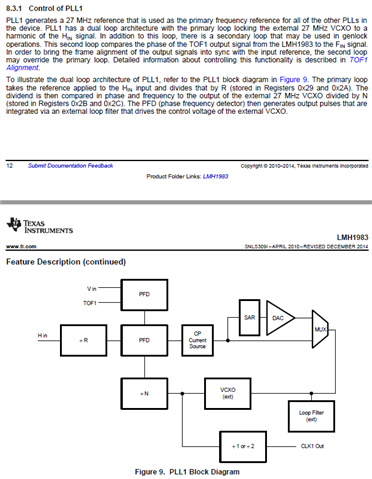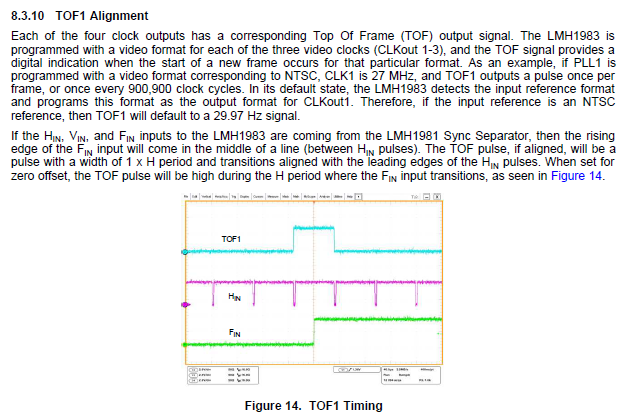Tool/software:
Hi Sir.
I have a question.
We use LMH1983 in a system where there is no F and only V and H are provided.
We also want to GenLock PLL1 as soon as possible from H.
Since there is no F, we plan to disable AutoFormatDetection at 0x05[5] and change 0x20 manually when the system becomes controllable.
However, I believe that the LMH1983 will start GenLock for PLL1 even before 0x05[5] is disabled and 0x20 is manually specified, based on (1) and (2) below.
Is this correct?
If this is correct, I am thinking of accelerating the power-on timing of the LMH1983, even if the timing of becoming controllable is later.
(1)0x05[4:3] default is set to GenLock mode.
(2)0x11[5:4] default should is set to NeverAlign.
Best regards,
Hiroaki




